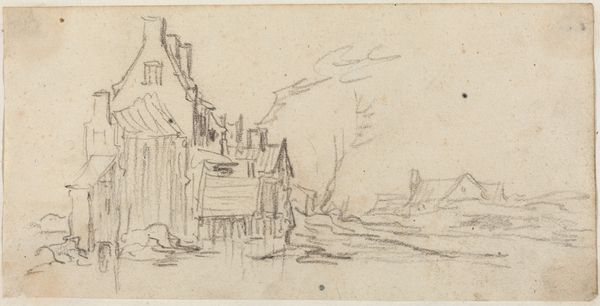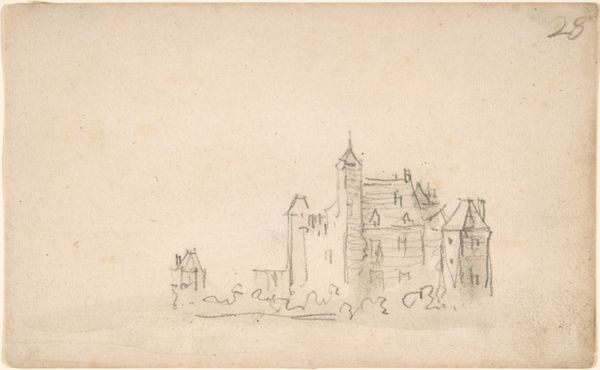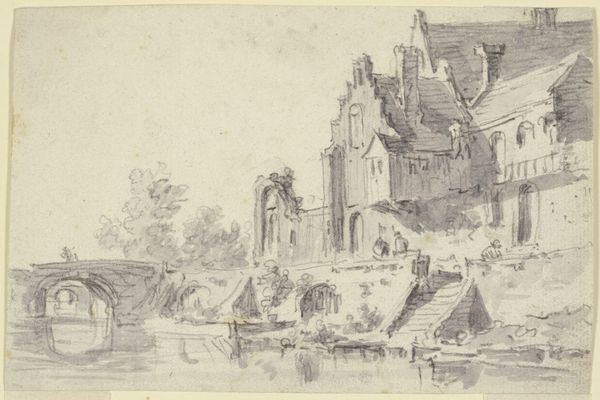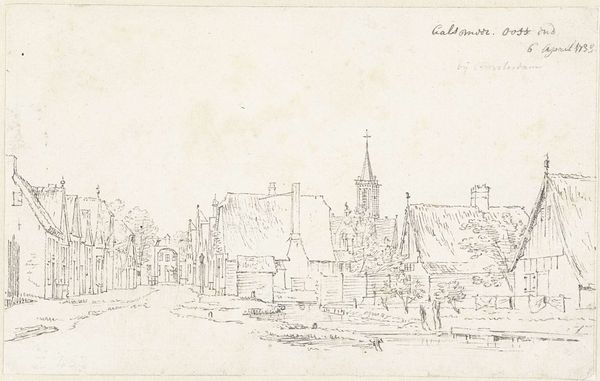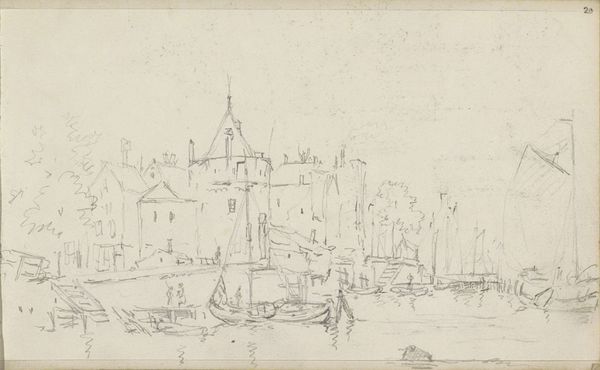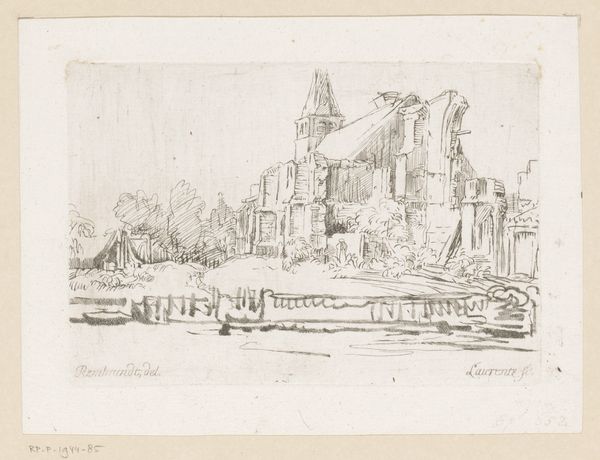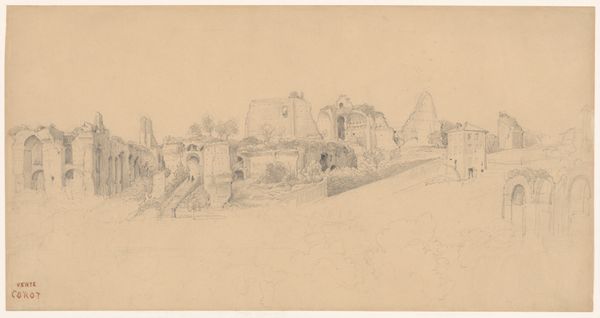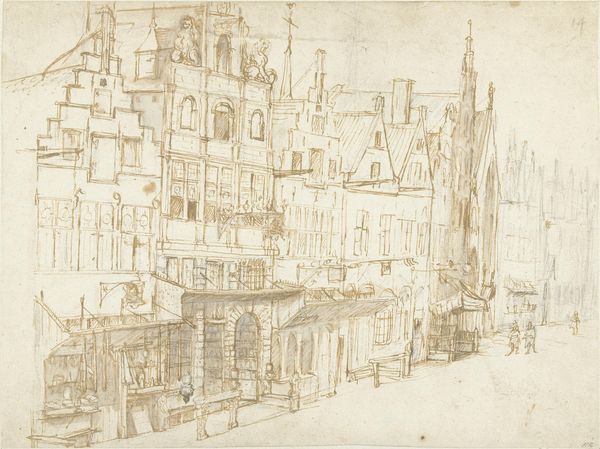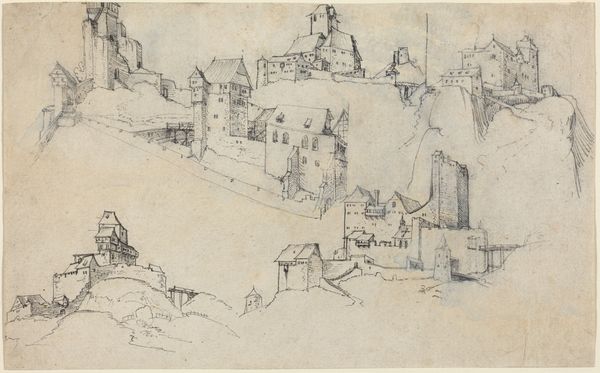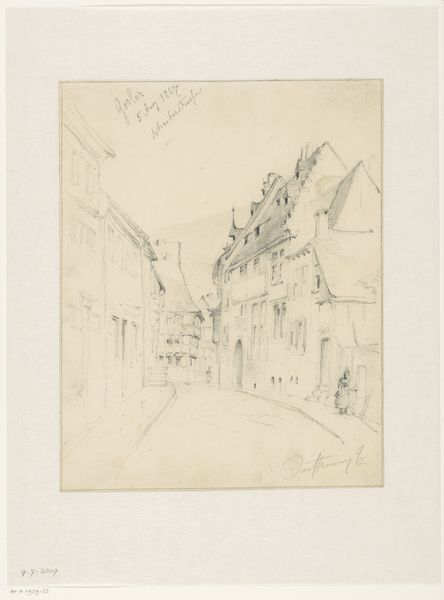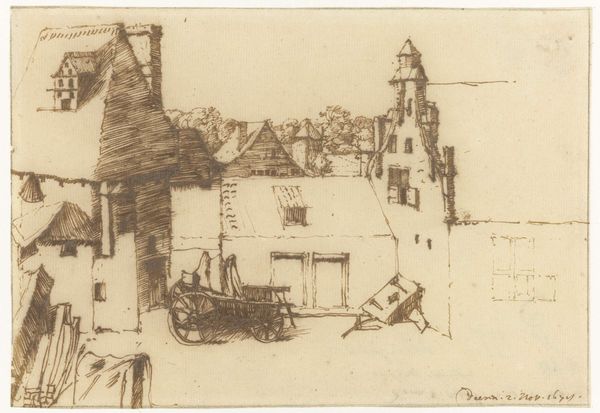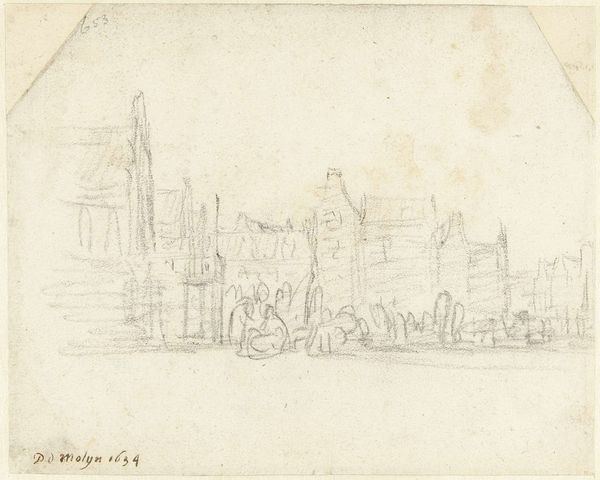
drawing, watercolor, ink
#
drawing
#
landscape
#
watercolor
#
ink
Dimensions: Sheet: 6 1/2 x 12 5/16in. (16.5 x 31.2cm)
Copyright: Public Domain
Curator: This ink and watercolor drawing, made around 1610, is Jan Brueghel the Elder's "The Ruins of Castle Merxem, near Antwerp," currently held in the collection of the Metropolitan Museum. What is your immediate response to this unassuming landscape? Editor: Well, I'm struck by the pervasive sense of melancholic decay, even on such a small scale. The washed-out hues and crumbling architecture tell a story of faded power, don’t they? Curator: Absolutely. Notice how Brueghel employs line and color to direct the viewer's eye. The meticulous details, from the weathered stonework to the reflections in the water, create a tangible sense of depth and texture. The artist’s delicate rendering and command of atmospheric perspective transforms the scene into something that exceeds the literal depiction of a decaying building. Editor: Yet this scene has its own politics. One wonders what conflicts or social upheaval led to the abandonment and disrepair. It forces us to contemplate the impermanence of structures built upon wealth and dominance. We are also, of course, invited to meditate on the ways in which structures of power often mask deeply imbalanced and uneven societal and economic arrangements. Curator: I understand your point. From a formalist point of view, one can observe that the composition is arranged to present this castle and bridge as a visual anchor for the piece, while its decay provides a strong contrast with the subtle colors and serene setting. It exemplifies a particularly refined style in Early Modern landscape painting. Editor: Still, for me, the romantic appeal is undermined by my sensitivity to its possible symbolic valences, its visual power speaking to a violent history of uneven labor relations, likely premised on gender inequality. This perspective moves us beyond pure aesthetics, encouraging dialogue between the artifact and broader societal concerns. Curator: Indeed. The tension between objective artistry and the socio-historical lens allows for a deeper exploration and more expansive, generous conversation. Thank you. Editor: And thank you.
Comments
No comments
Be the first to comment and join the conversation on the ultimate creative platform.
